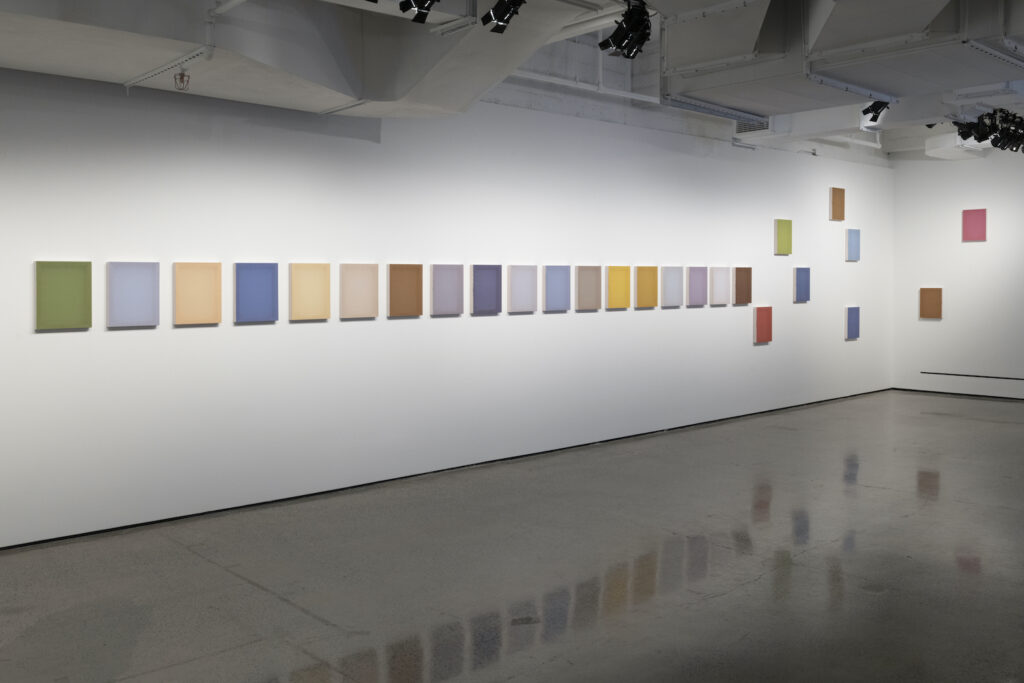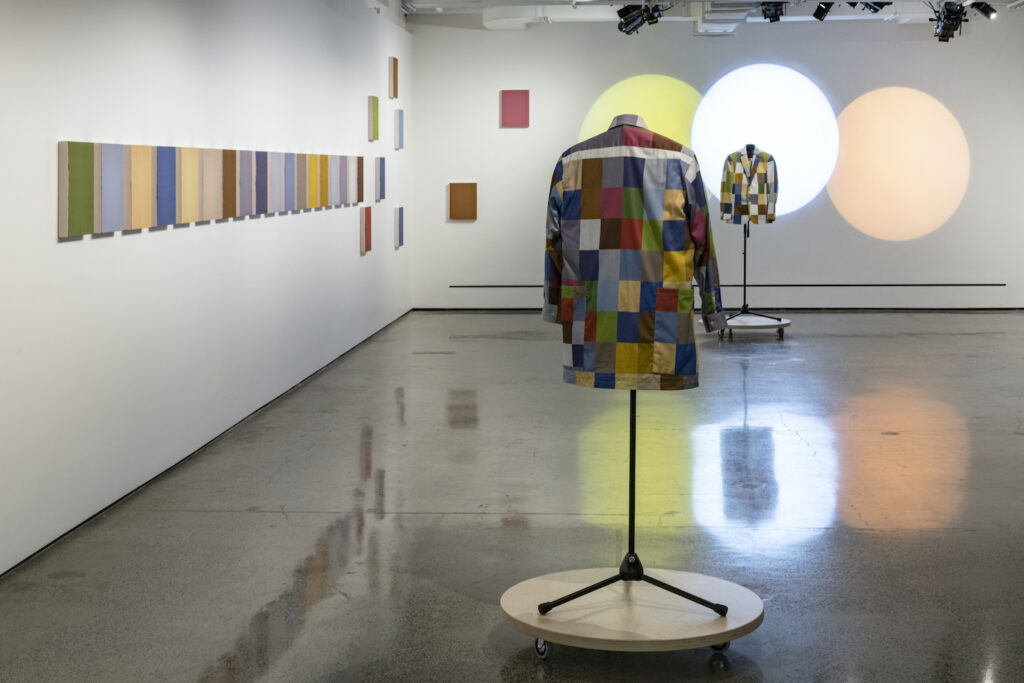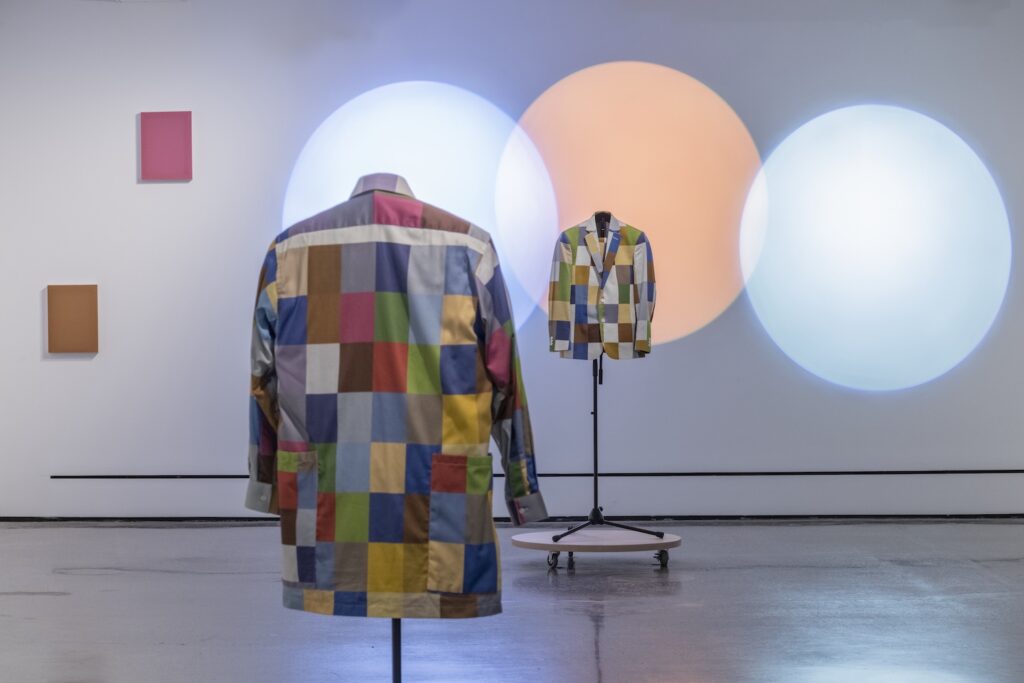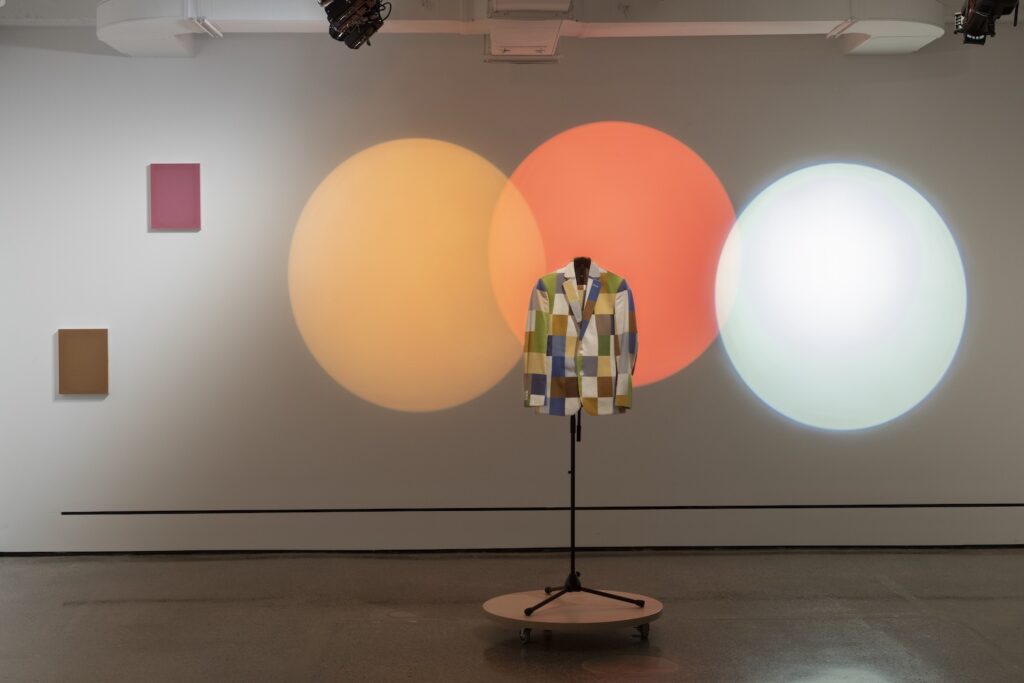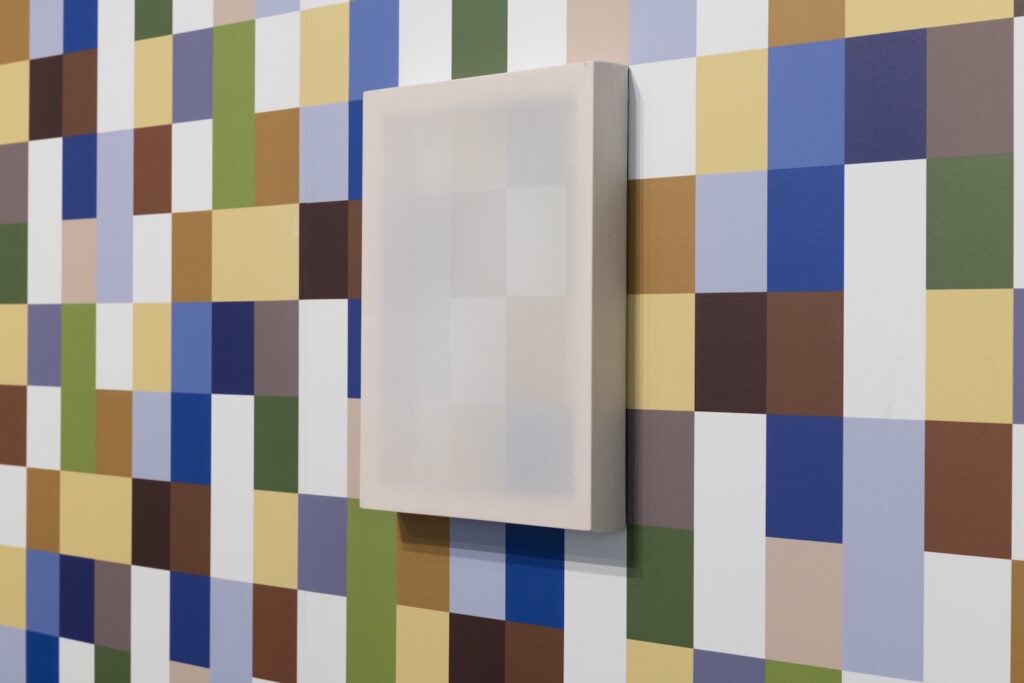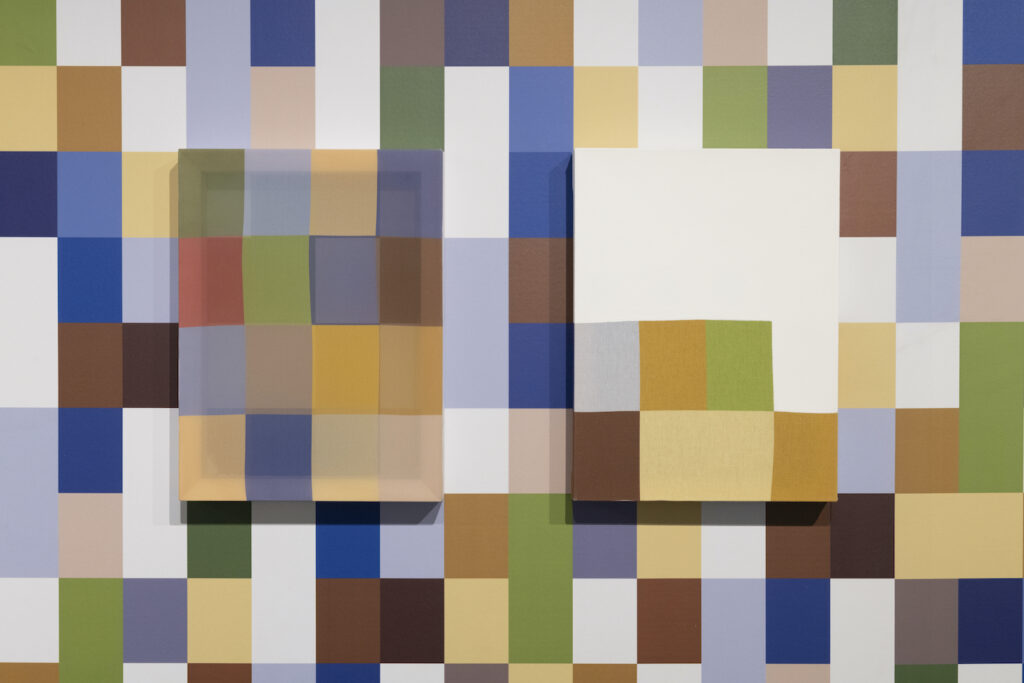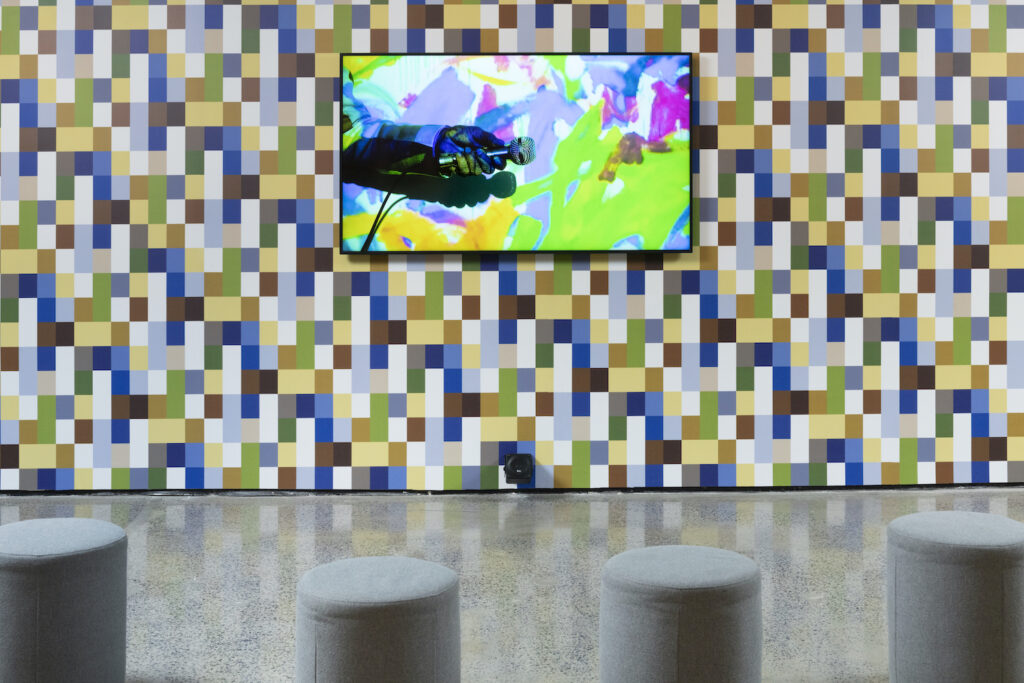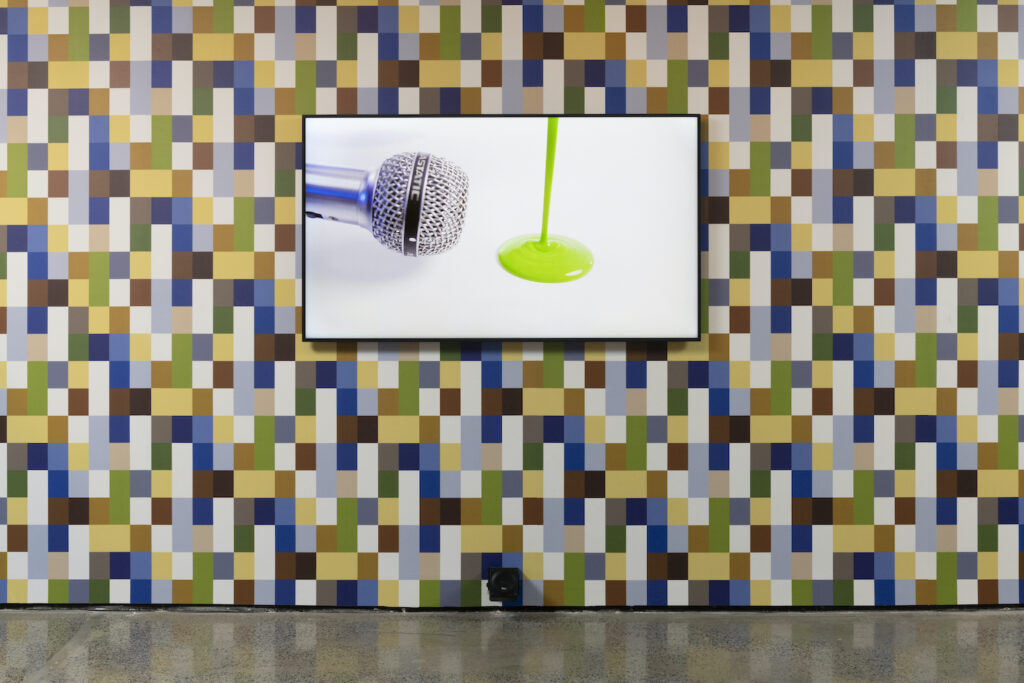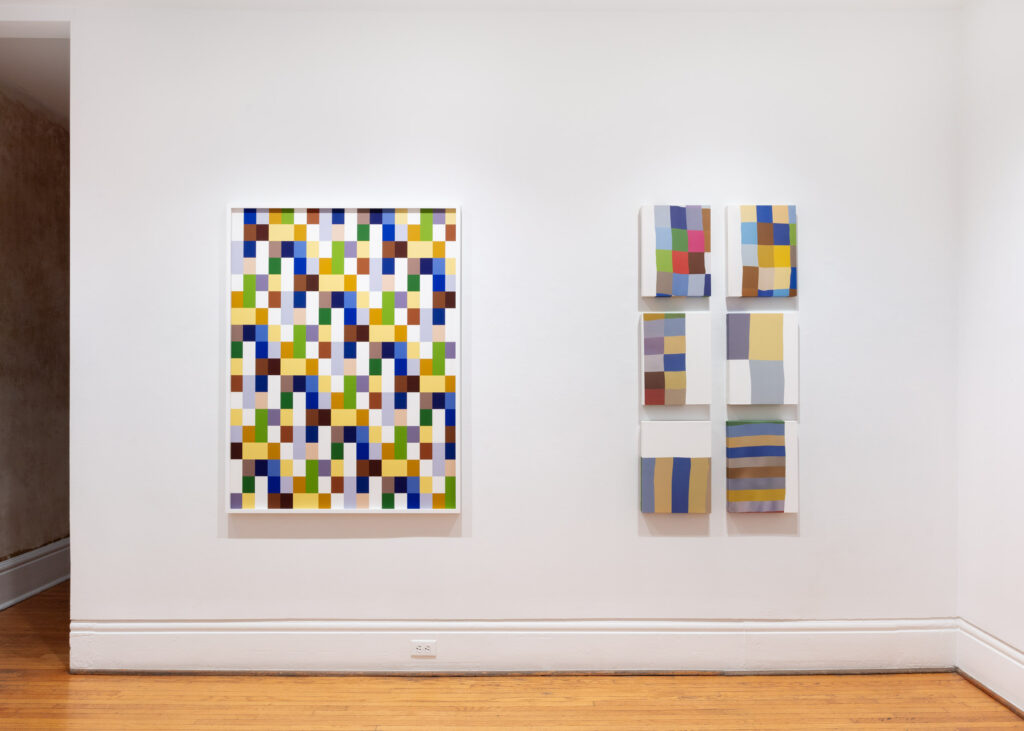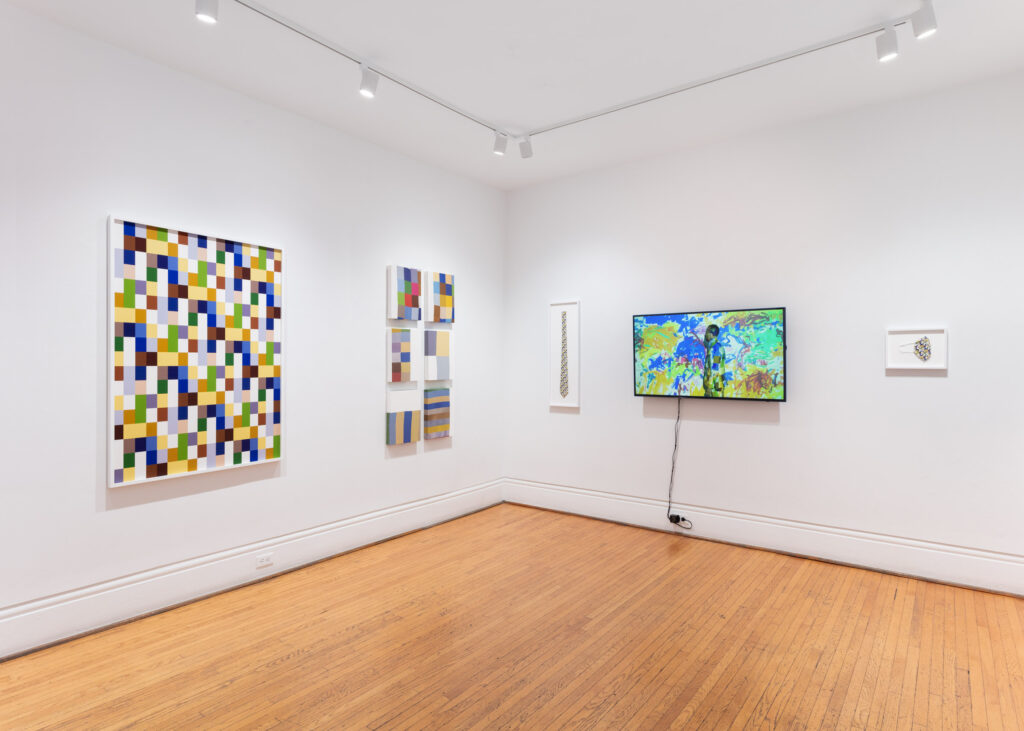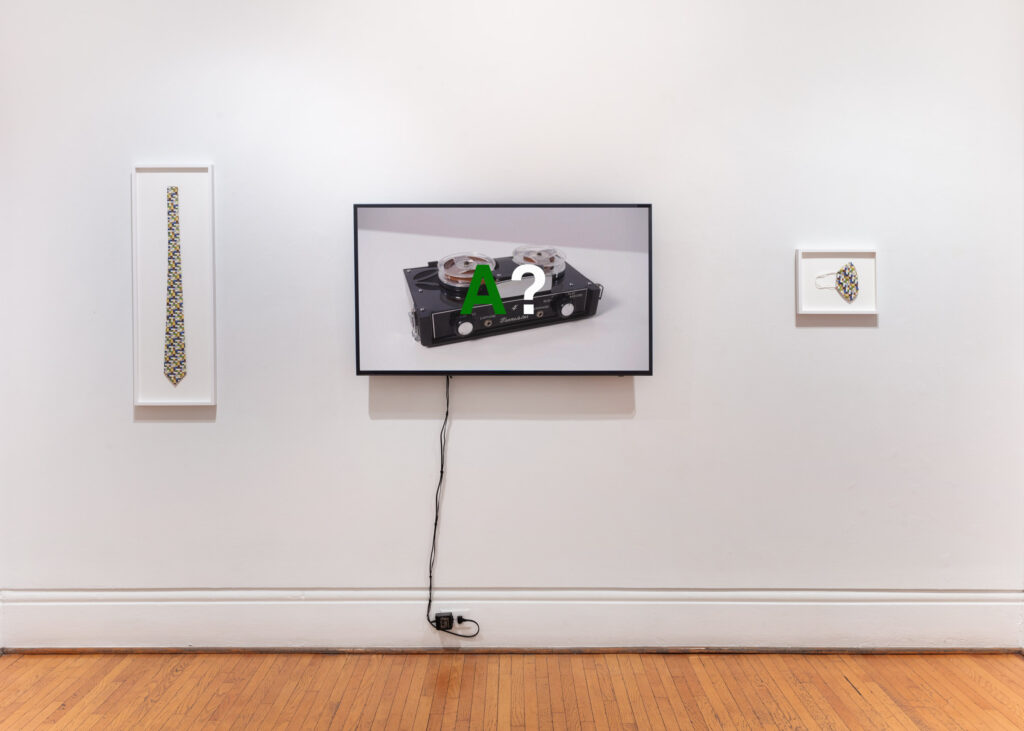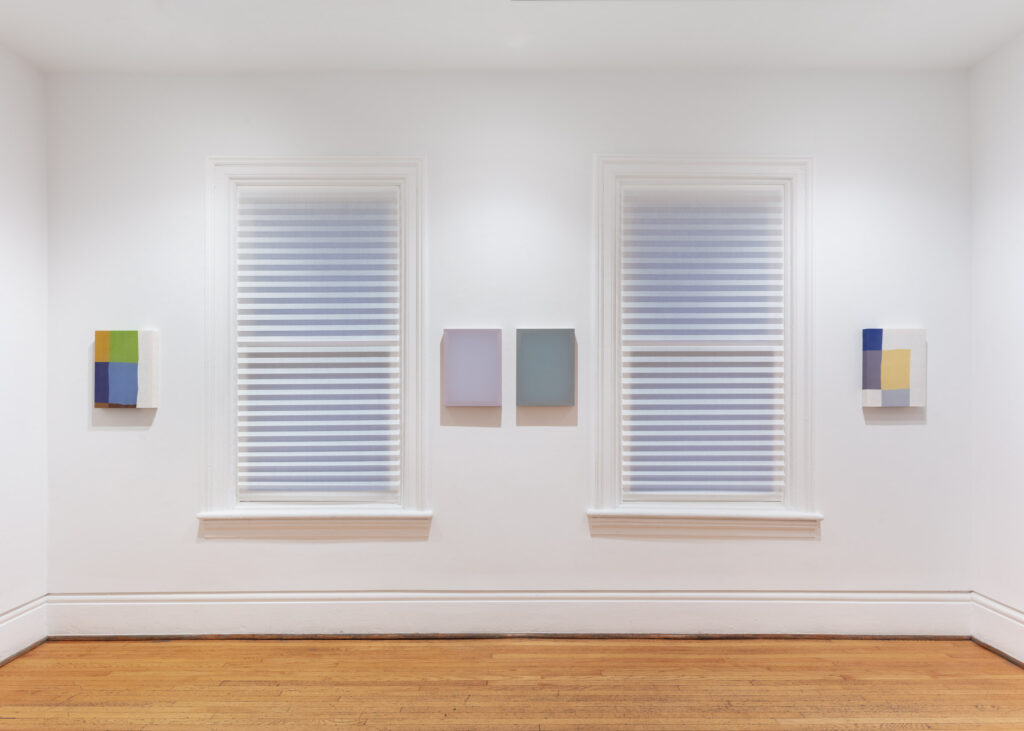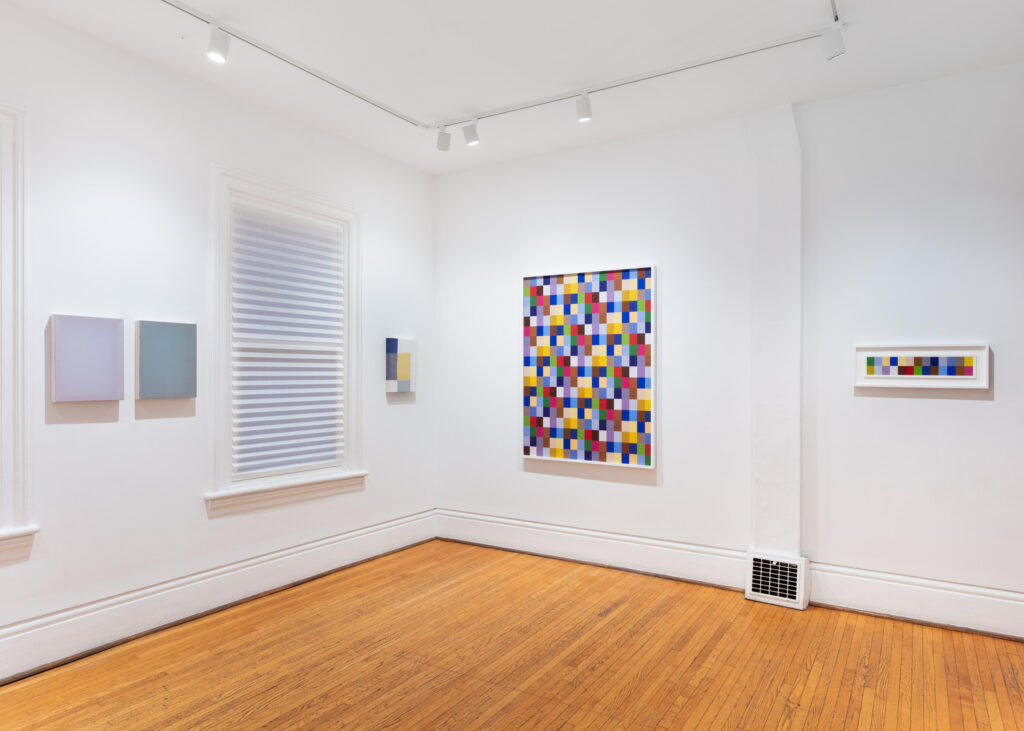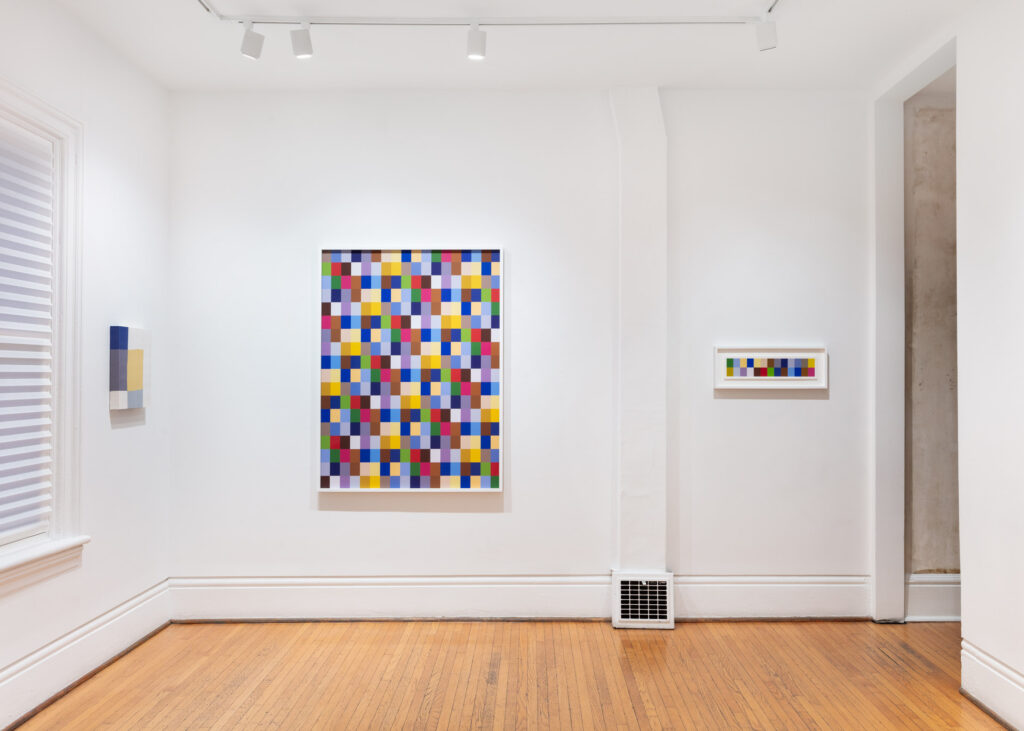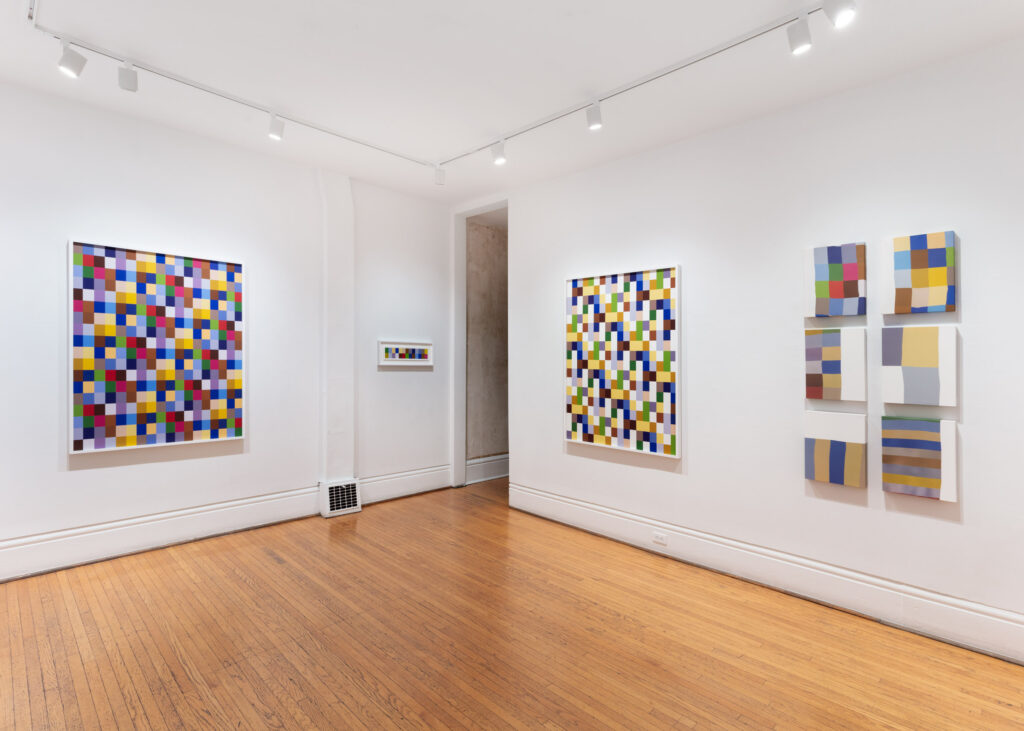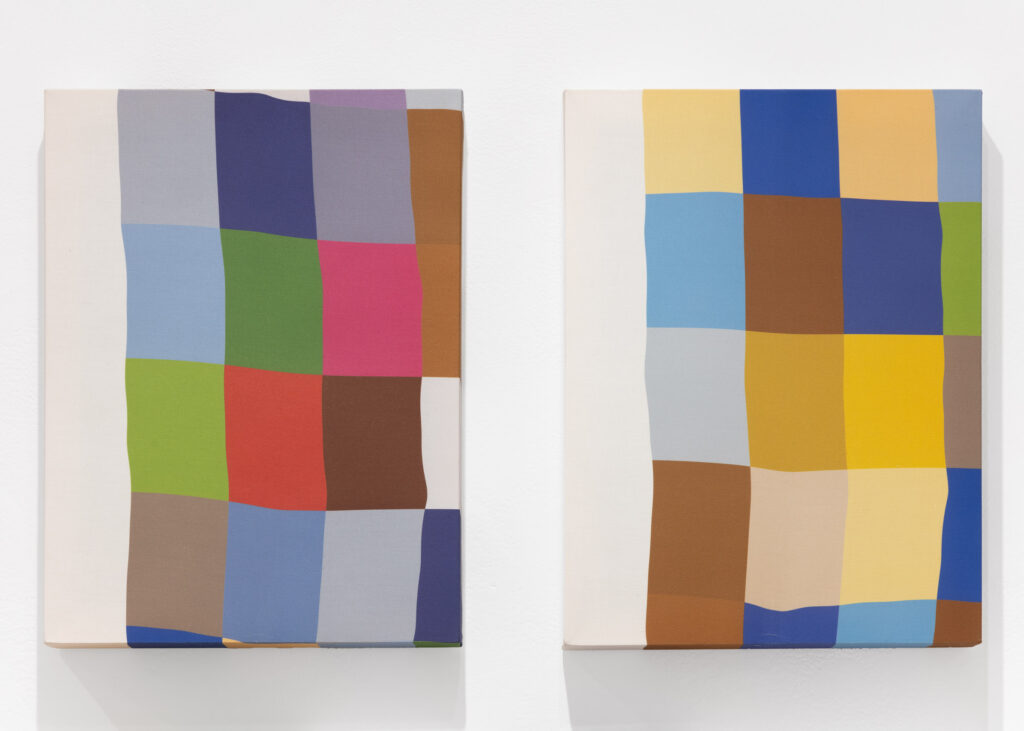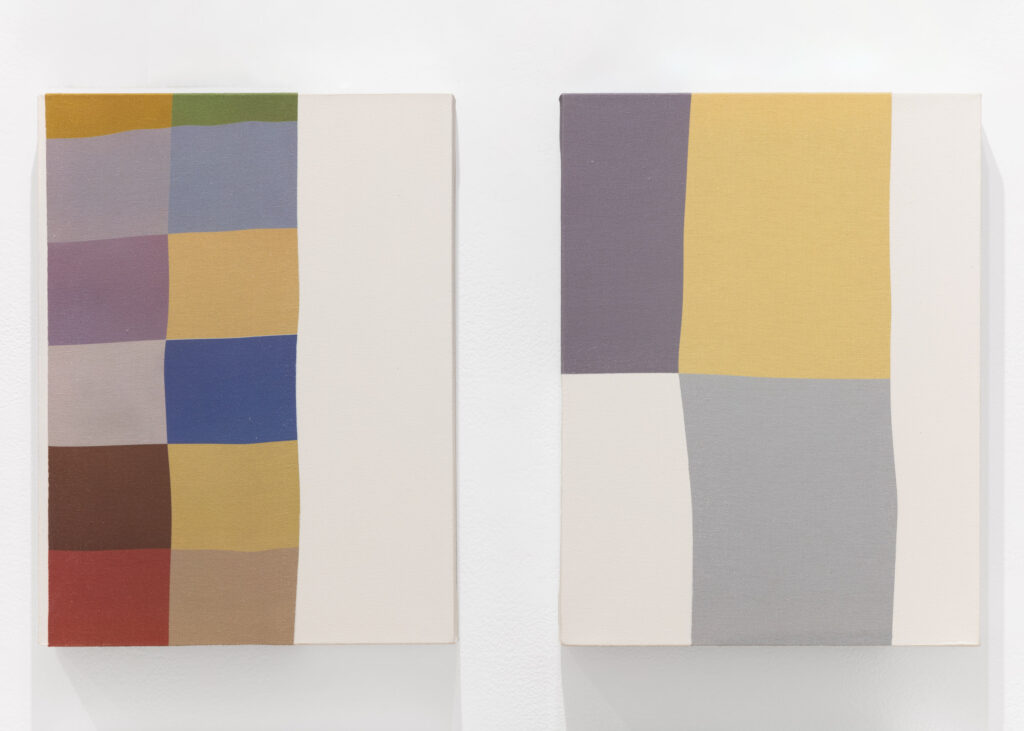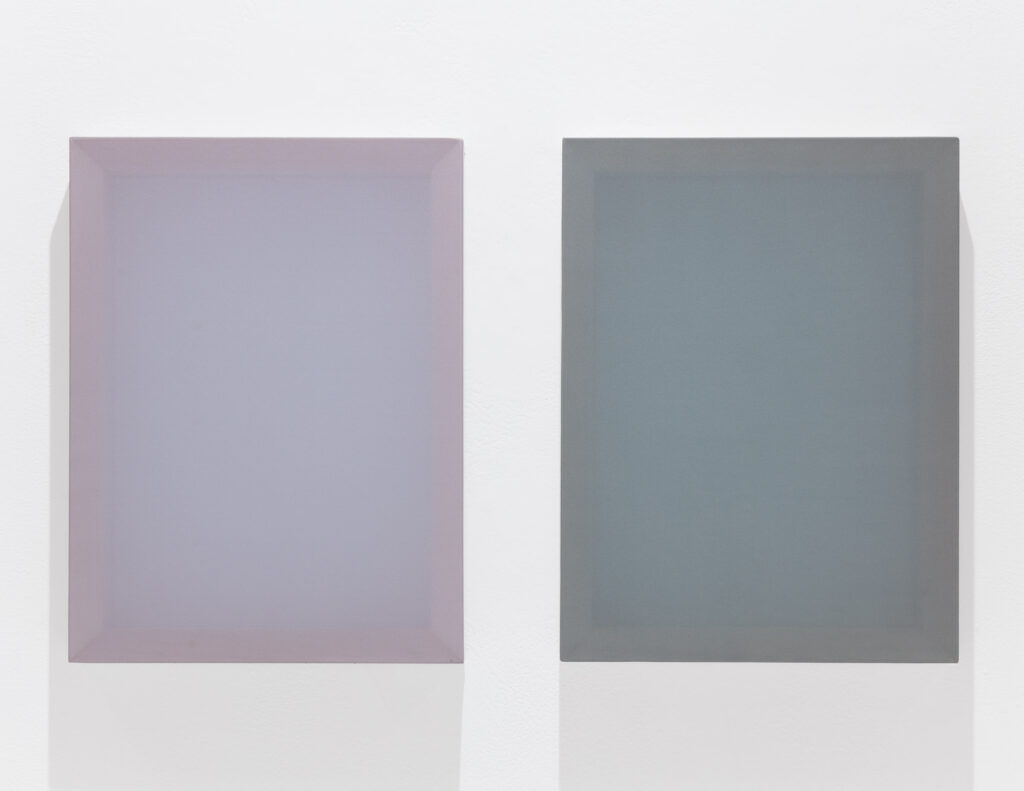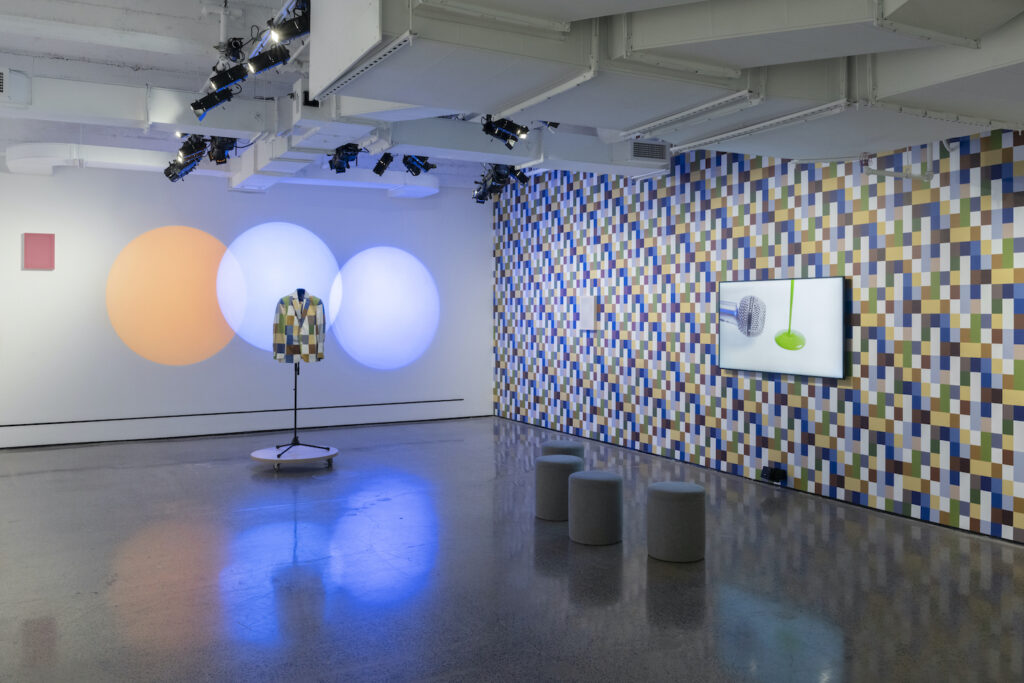
Don’t You Like the Green of A? based on the correspondences between letters and colours specific to Joan Mitchell’s synaesthesia––a condition that Henricks happens to share with her. Synaesthesia is a neurological syndrome in which perception by one sense automatically triggers a perception in one of the other senses. This connectivity between senses may be manifested in different ways. For example, in grapheme-colour synaesthesia, numbers or letters are associated with colours; in music-colour synaesthesia, people perceive colour by hearing a sound or music. This new project returns to a structure that Henricks previously adopted in at least two works: Monochrome A to Z (Synaesthesia Paintings) (2012-14) and Monochrome A to Z (for Grapheme-Colour Synaesthetes) (2012). In the former work, a series of twenty-six monochrome paintings of an identical small size, show the colours that Henricks associates with each letter of the alphabet. In the latter work, each of the twenty-six drawings presents a single letter, repeated until the surface is entirely covered. Don’t You Like the Green of A? is made, instead, from Joan Mitchell’s associations between letters of the alphabet and certain colours and is presented as a more elaborate combination of these associations. The installation also features monochrome paintings, but they are accompanied by wallpaper, as well as a business suit and smock that reflect Mitchell’s chromatic alphabet. Specifically, the coloured checkerboards that cover these elements reproduce the sequence of letters in the alphabet (on the wallpaper and the smock) or spell out the title of the installation, Don’t You Like the Green of A? (on the business suit and the wallpaper).
On the wallpapered wall, a video work is presented on a monitor. Acting as keystone to the installation, the video features two versions of Henricks: one wearing the business suit (the “curator”) and the other wearing the smock (the “artist”). (These are the very garments that are in the installation, presented on hangers mounted on microphone stands and placed on small rolling platforms). In the video, the relationship between the two protagonists is almost affectless. The “curator,” expressionless, acts as an intermediary between the “artist” and the spectator. Every now and then, he holds out a microphone to capture the sounds that the colours used in Mitchell’s paintings might make. Indeed, for some people with synaesthesia, letters (here associated with a colour) trigger a sound or tone. Thus, Henricks follows an approach he established in 2012, addressing synaesthesia not only as a subject but also as a methodology. (Text by Mark Lanctôt).
Musée d’art contemporain de Montréal exhibition
Photos: Paul Litherland
Paul Petro Gallery exhibition, 2024
Photos: LF Documentation

